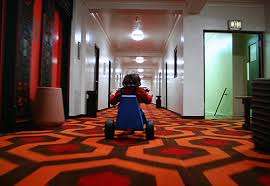RELATIONSHIP BETWEEN CINEMA AND ARCHITECTURE
- Aparna Venkat

- Nov 29, 2020
- 2 min read
There has always been a strong relationship between architecture and cinema. Next to actually being there, video is one of the best ways to experience architecture. Can you imagine a film featured in a vacuum? Without the scene to fill each storyline, we cannot be transported away from our reality to the world of the film we are immersed in. The location and building indeed play a crucial role in movies. The buildings and architecture support the character development of the films. It helps to understand the subtleties of the movie plot. Architecture for cinema is like teleportation. Without any visuals or a scene to resemble or elaborate the storyline, no one will be able to understand the look and feel that writer wants to express.
Set construction is undoubtedly one of these moments of intersection. Alfred Hitchcock is an example of a filmmaker who has made extensive use of sets to create spaces of tension and horror in his productions .In the movie Psycho, the scene showcasing the murder sequence in the bathroom, I believe, was one of Hitchcock's best cinematic moments. It depicted a sterile bathroom space was a stark contrast to the frightening murder that happens there. This scene, the space and emotions it evoked has long remained in my mind.

In the movie, The shining, Stanley Kubrick uses architecture to create an interior labyrinth. The feeling of isolation grows steadily throughout the movie. This same theme is continued inside when one weighs the vast immensity of the sets against the three tiny occupants, the spaces in the Hotel seem to overpower the characters of the film. The use of symmetry is also prevalent in the set design for The Shining used to echo the duality present within the story, and also to make anything not a part of that symmetry. The geometric carpet designs used throughout the film acted like optical illusions for me, creating the feeling of getting absorbed into the space. Finally, the frequent use of corridors, and the presence of their outdoor equivalent, the hedge maze, is also key in creating the atmosphere for this movie. These elements give the hotel the feel of a labyrinth, where one never knows what lurks beyond the next corner.
In the movies psycho and the shining, architecture solely becomes the tool for stimulating emotional responses in the users, unburdened by the constraints of functionality. In both cases, we gradually become familiar with the cinematic spaces, creating our own symbolism. Similarly, even in architecture we create mental map spaces, and project our emotions on the canvas of architecture.
Undeniably, architecture plays a hand in hand role and brings out the artistic side to cinema as does cinema by walking along and influencing the modern architecture and there is no limitation or end to what extents these art forms can reach and bring out from each other.














Comments